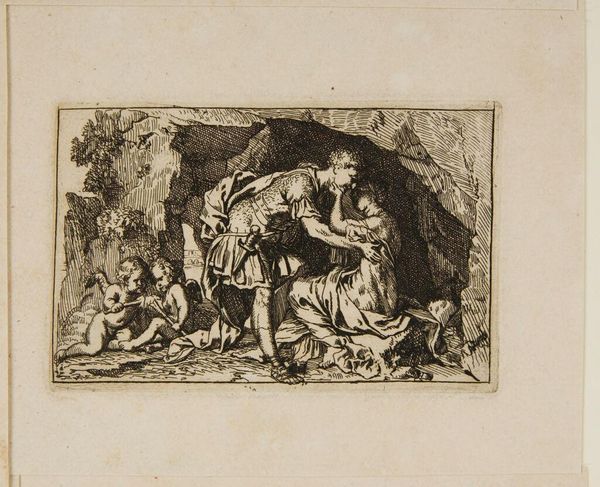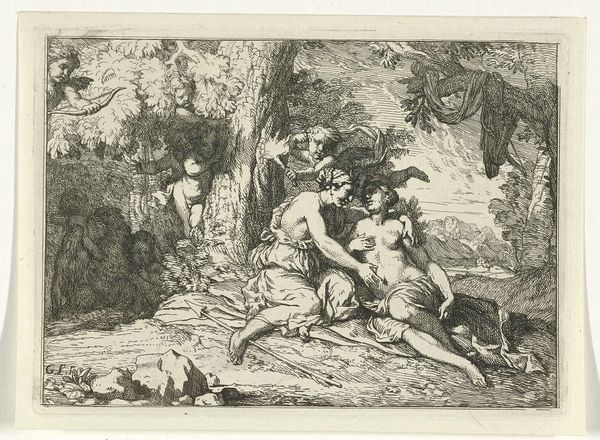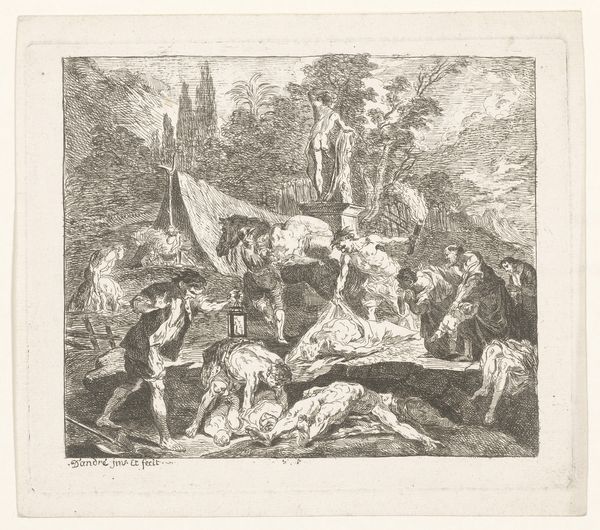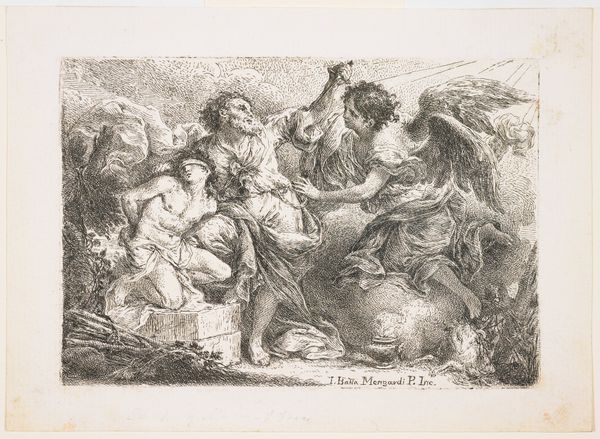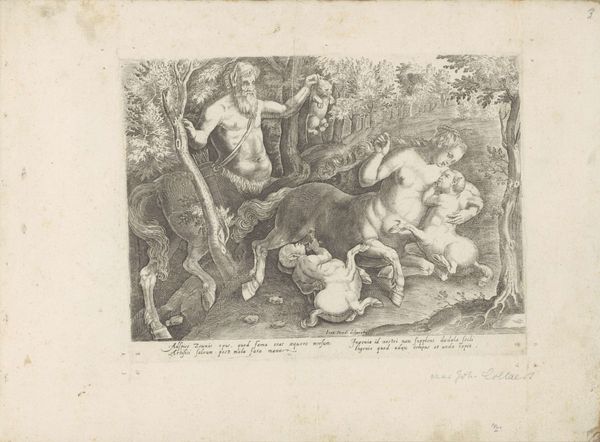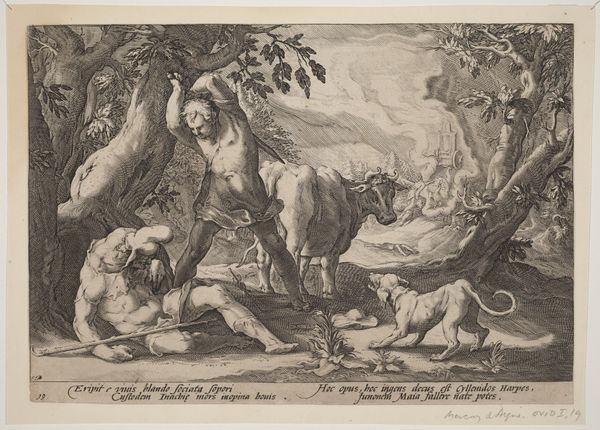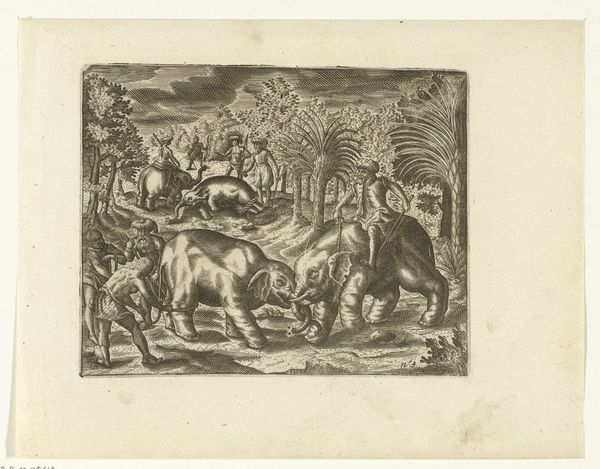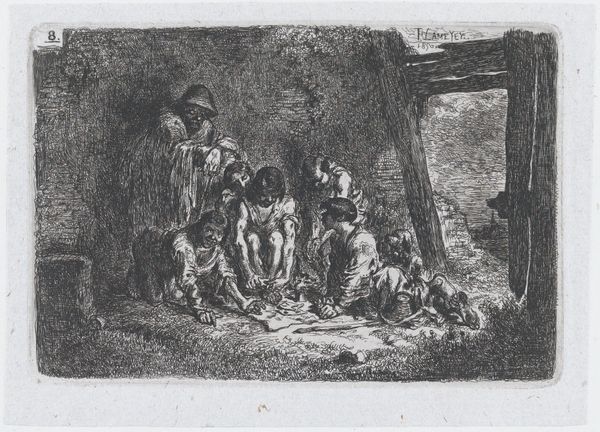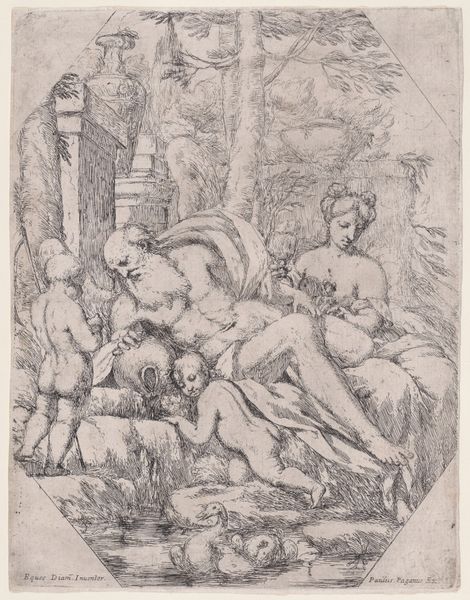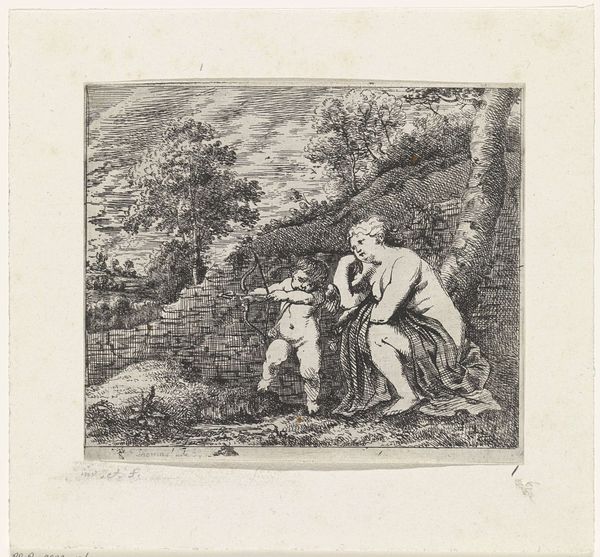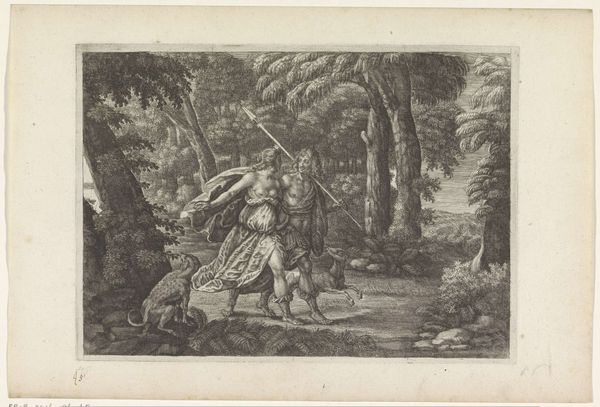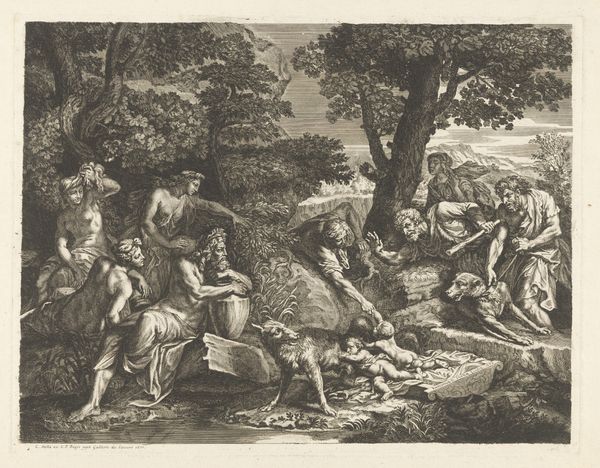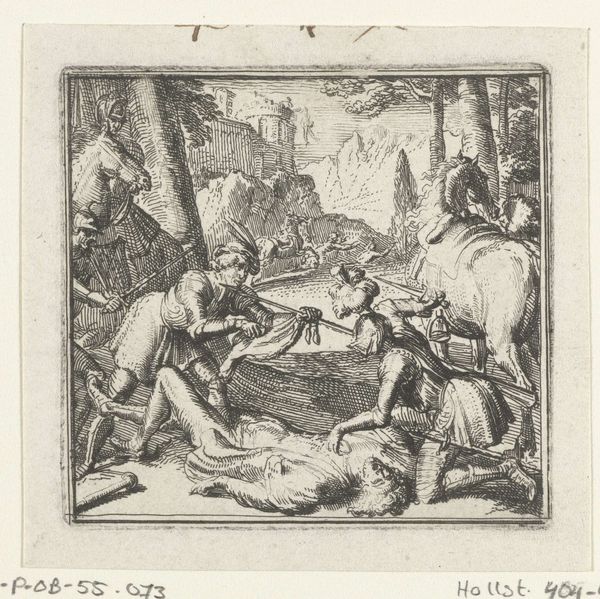
etching, engraving
#
baroque
#
etching
#
landscape
#
figuration
#
history-painting
#
engraving
Dimensions: height 67 mm, width 103 mm
Copyright: Rijks Museum: Open Domain
Editor: So, this is "Dido and Aeneas sheltering from the storm" by Gerard de Lairesse, an etching from 1668. The black and white lines give it such a dramatic feel. What do you see in it? Curator: I see a powerful intersection of history, myth, and gender roles. Think about the context: this is the Baroque period, where power was visually asserted. We have Aeneas, the masculine hero, shielding Dido. But is it protection, or a symbolic claiming of territory, of ownership? Editor: Hmm, interesting. I initially thought of it as simply a romantic scene. Curator: And that’s valid, but let’s unpack that romanticism. Whose story is being centered here? Aeneas’, the hero destined to found Rome, or Dido’s, the queen who is ultimately abandoned? How does this dynamic echo broader power imbalances of the time, and perhaps even today? Editor: I see what you mean. The Cupids almost seem to be witnesses, knowing the tragedy to come. Curator: Precisely. And consider Lairesse himself. He was a prominent figure in Dutch art, deeply embedded in the societal structures. Was he critiquing these power dynamics or reinforcing them through this depiction? Does this piece promote discussion on how women have had their voices subdued through artwork? Editor: I hadn’t considered it that way. I was just seeing it at face value, but thinking about those power dynamics definitely changes the way I view it. Thanks for the insights. Curator: Of course. It’s in this dialogue that we uncover deeper meanings and relevance.
Comments
No comments
Be the first to comment and join the conversation on the ultimate creative platform.
